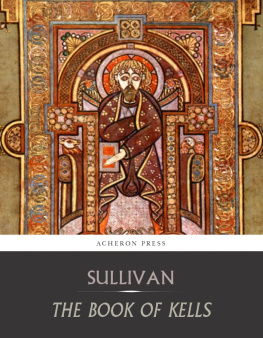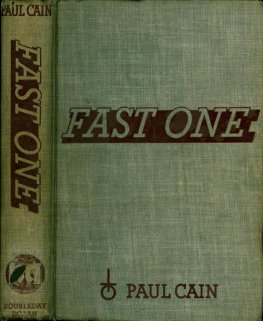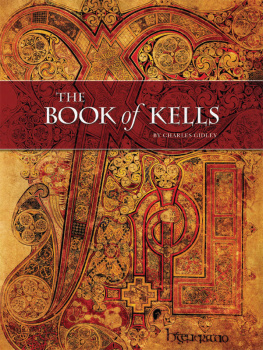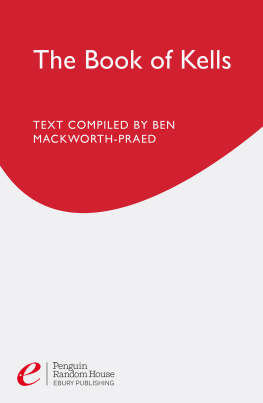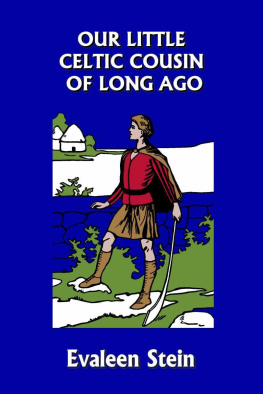Edward Sullivan - The Book of Kells
Here you can read online Edward Sullivan - The Book of Kells full text of the book (entire story) in english for free. Download pdf and epub, get meaning, cover and reviews about this ebook. year: 2018, publisher: Charles River Editors, genre: Religion. Description of the work, (preface) as well as reviews are available. Best literature library LitArk.com created for fans of good reading and offers a wide selection of genres:
Romance novel
Science fiction
Adventure
Detective
Science
History
Home and family
Prose
Art
Politics
Computer
Non-fiction
Religion
Business
Children
Humor
Choose a favorite category and find really read worthwhile books. Enjoy immersion in the world of imagination, feel the emotions of the characters or learn something new for yourself, make an fascinating discovery.
- Book:The Book of Kells
- Author:
- Publisher:Charles River Editors
- Genre:
- Year:2018
- Rating:4 / 5
- Favourites:Add to favourites
- Your mark:
- 80
- 1
- 2
- 3
- 4
- 5
The Book of Kells: summary, description and annotation
We offer to read an annotation, description, summary or preface (depends on what the author of the book "The Book of Kells" wrote himself). If you haven't found the necessary information about the book — write in the comments, we will try to find it.
Edward Sullivans The Book of Kells is an incredible review of the illustrations of the Book of Kells. It includes the original 24 images of the Book of Kells.
The Book of Kells — read online for free the complete book (whole text) full work
Below is the text of the book, divided by pages. System saving the place of the last page read, allows you to conveniently read the book "The Book of Kells" online for free, without having to search again every time where you left off. Put a bookmark, and you can go to the page where you finished reading at any time.
Font size:
Interval:
Bookmark:
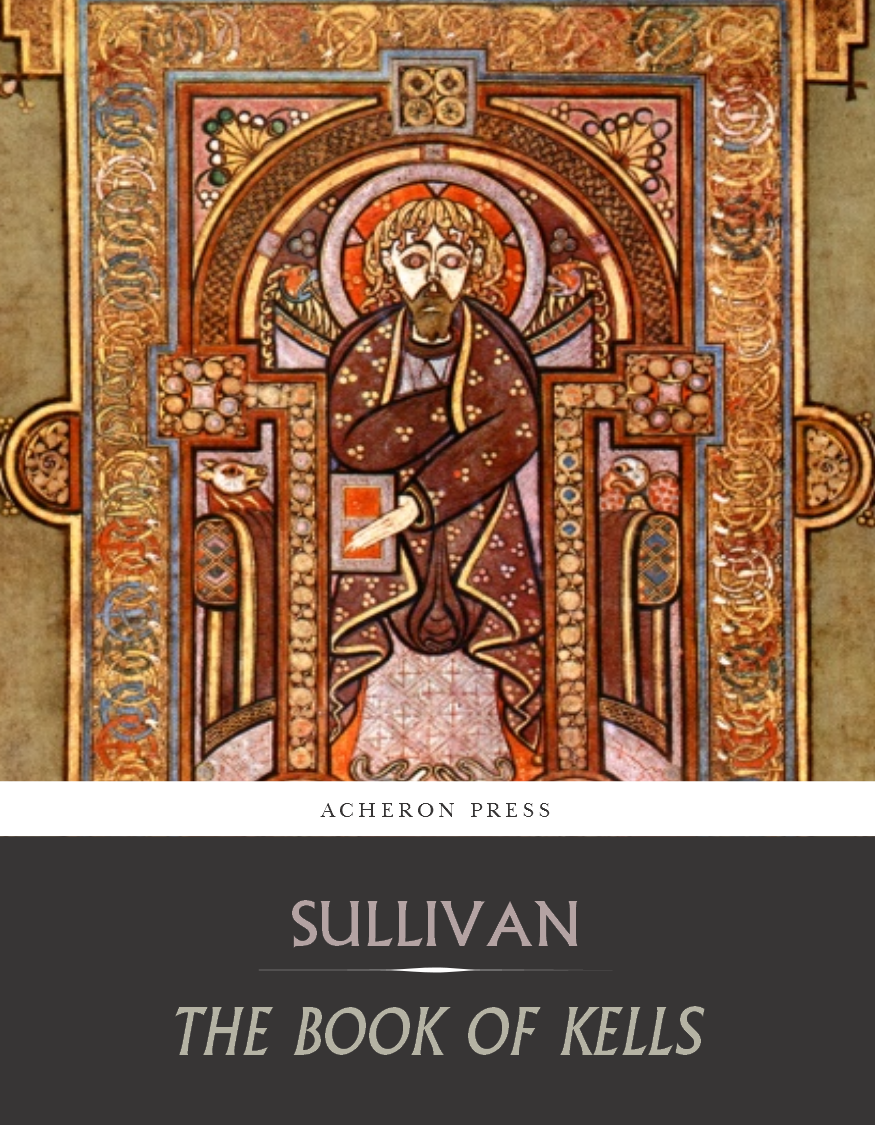

THE Editor desires to acknowledge his indebtedness to the late Rev. Dr. Abbott, Librarian of Trinity College, Dublin, who kindly gave permission and every facility for the reproduction of the pages from the Book of Kells which appear in this volume. Special thanks are due to the Sub-Librarian, Mr. Alfred de Burgh, whose invaluable assistance and untiring pains in revising the reproductions at various stages of the work reduced very considerably the difficulties with which the engravers were faced. As mentioned by Sir Edward Sullivan towards the end of his Introduction, the compound letters shown in the last five plates are from remarkably clever copies made by the late Mrs. John R. DOlier. Her son, the late Mr. Isaac DOlier, kindly placed the copies at the disposal of the Editor for reproduction in the present volume.
To those who have not examined the Book of Kells two features in the plates may require explanation; viz., the cut margins, which in some cases have damaged the designs; and the variation in the tones of the backgrounds. Both these defects are present in the original manuscript. The first, as explained on page 6 of the Introduction, is due to the ignorance of some incompetent binder to whom the priceless volume was entrusted about one hundred years ago; and the second is caused by discolouration, for which age and the fact that the Manuscript was for some time buried under the soil are probably responsible.
THE success which has attended the publication of this work is, for two reasons, a source of much satisfaction to those responsible for the original issue of the book. In the first place, it amply justifies the belief, entertained by the producers when the work was brought out, that the presentation of a series of the unrivalled illuminated pages of the Book of Kells, in their actual colours, would be regarded as a welcome supplement to such previously published works on the same subject as contained only uncoloured representations; and secondly, it establishes the fact that there are many more personsoutside the world of connoisseurs, archologists and palographerswho are interested in the Manuscript itself, its history, and its artistic details, than was popularly believed to be the case. Since the date of the first issue, some six years of war and the turmoil that follows war apparently put an end to all serious investigations in the domain of Celtic palography. No new light, so far as I am aware, has been thrown during those years on any disputed questions relating to the Book of Kells. Consequently there is little to add, from the studies of others, to the description of the Manuscript as given in the first edition. The Manuscript itself is, however, so full of information from within, that a slight study of even the reproductions given in this volume enables a careful observer to discover features of interest, previously unnoticed, on almost every page. Amongst such discoveries, made by myself, are a few perhaps worth mention.
I suggested in 1914 that the square-shaped punctuation marks, which are a characteristic of the Manuscript, might have some bearing on the vexed question of its date. What I have since noticed has considerably strengthened my original surmise. For instance, in Plate X. (lines 2 and 7) will be seen examples of the three-dot full stop which is frequently used to end a sentence throughout the work. It will be noticed, however, that in close and somewhat puzzling proximity to these stops there are other very similar dot-formed groups, actually on the line of the text, which, at first sight, might easily be taken for punctuation signs. They are in reality only ornaments; and the dots are in every case round in form, whereas the true punctuation marks are always rectangular. The fact that these two very similar forms are used on the same page, in conditions calculated to mislead a reader accustomed to the round forms of an earlier date, would seem to show that the Manuscript must have been written at a time when the transition stage was already past, and the square punctuation had definitely superseded the rounded form.
Besides this, there is another piece of internal evidence, as yet unnoted, which shows that the new system was firmly established when the Manuscript was written. The scribe occasionally illuminates the stops, enlarging them into decorative forms to harmonise with the general embellishment of the page. Plate III, contains three striking examples of this curious innovation. In the 2nd, 4th, and 7th lines from the foot of the page will be seen quaint ornaments of rectangular outline, intruding, as it were, immediately after the words seniores, profetissa, and ihm. They have probably been regarded, up till now, as mere instances of the stray decorative features which are scattered broadcast through the whole volume. Their position, however, in places where a full stop is actually required, and where there is no trace of any other punctuation marks to be seen, shows them to be nothing more or less than enlarged forms of the single dot which was one of the recognised methods of indicating the end of a sentence in early Celtic manuscripts (see post p. 35). Plate X., at end of line 4, furnishes another example; and Plate XV, contains yet another, though of much smaller proportions, following the word mihi. These strange instances of decorated punctuation would seem to me to have been introduced deliberately with a view to drawing special attention to the recently adopted rectangular punctuation signs; and it is hardly conceivable that liberties such as these would have been taken by any scribe unless the new system of pointing had been generally adopted at the time when he had the work in hand. If this be the case, it must follow that the date of the Manuscript should be ascribed to a period which cannot possibly be earlier than the latter end of the ninth century.
I have added a little to the Introduction bearing on the contest that continued for nearly a thousand years between the Byzantine and the Celtic modes of embellishment in the field of artistic illumination, and have touched, though lightly, on the superb results that sprang from the final union of the two contending forces. Also a few trivial oversights have been corrected in the letterpress of the original edition.
EDWARD SULLIVAN
ITS weird and commanding beauty; its subdued and goldless colouring; the baffling intricacy of its fearless designs; the clean, unwavering sweep of rounded spiral; the creeping undulations of serpentine forms, that writhe in artistic profusion throughout the mazes of its decorations; the strong and legible minuscule of its text; the quaintness of its striking portraiture; the unwearied reverence and patient labour that brought it into being; all of which combined go to mate up the Book of Kells have raised this ancient Irish volume to a position of abiding preeminence amongst the illuminated manuscripts of the world. Many attempts have been made to reproduce its unique illuminations; and, so far as form and outline are concerned, the reproductions have been as far as possible successful. But all such efforts have up till now failed to give a living representation of its marvellous pagesfor without its colour harmonies no reproduction can be regarded as adequate from the point of view of art. The last important attempt at reproduction in colour was made about forty years ago; but the scientific knowledge of the time was unequal to the strain sought to be put upon it. In the years which have since elapsed the science of light, photography, and colour-reproduction has made rapid advances towards an accuracy which was unknown when the earlier attempts were published; and it is only by the aid of such advancement that the production of the present volume has become possible.
Font size:
Interval:
Bookmark:
Similar books «The Book of Kells»
Look at similar books to The Book of Kells. We have selected literature similar in name and meaning in the hope of providing readers with more options to find new, interesting, not yet read works.
Discussion, reviews of the book The Book of Kells and just readers' own opinions. Leave your comments, write what you think about the work, its meaning or the main characters. Specify what exactly you liked and what you didn't like, and why you think so.

